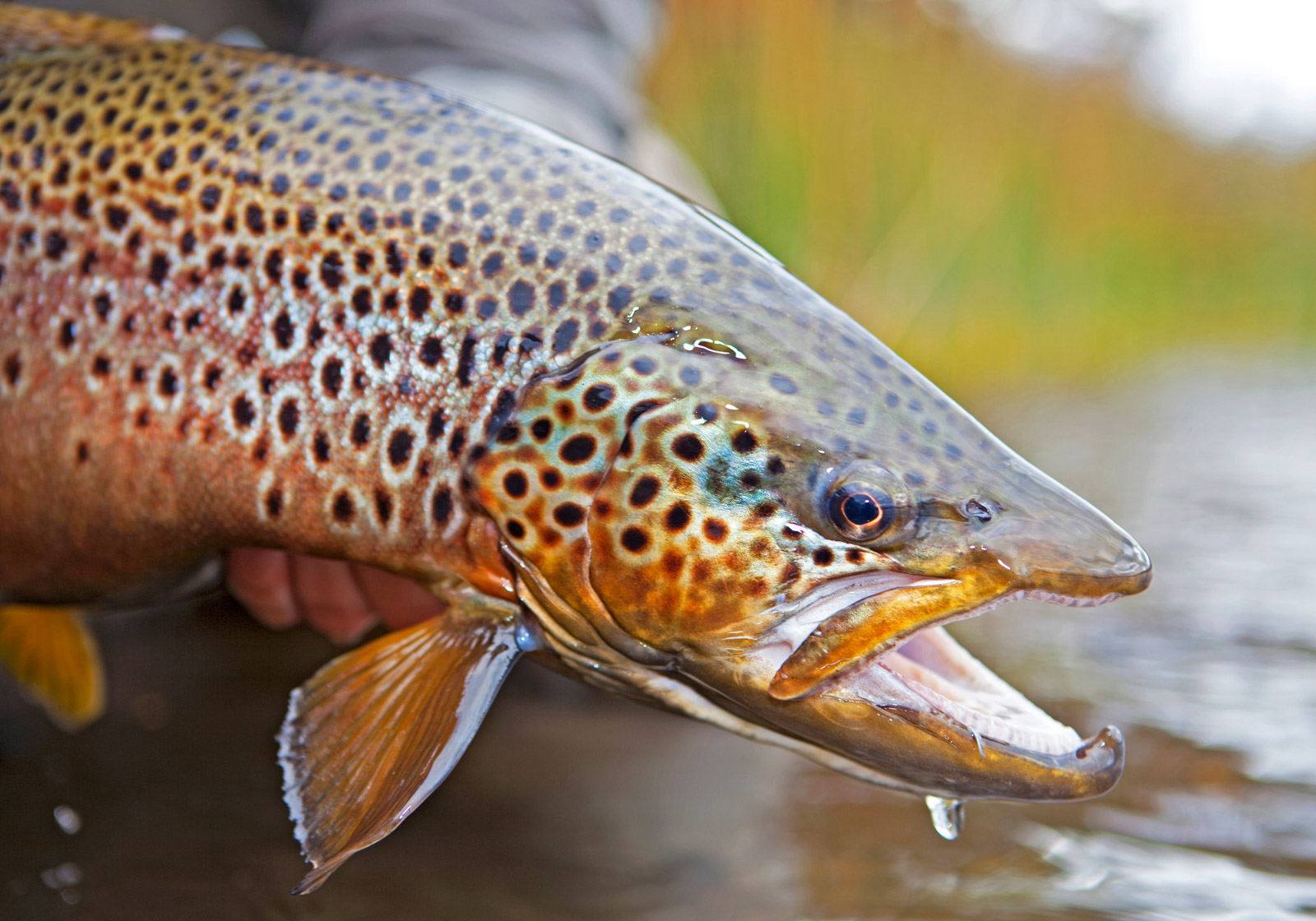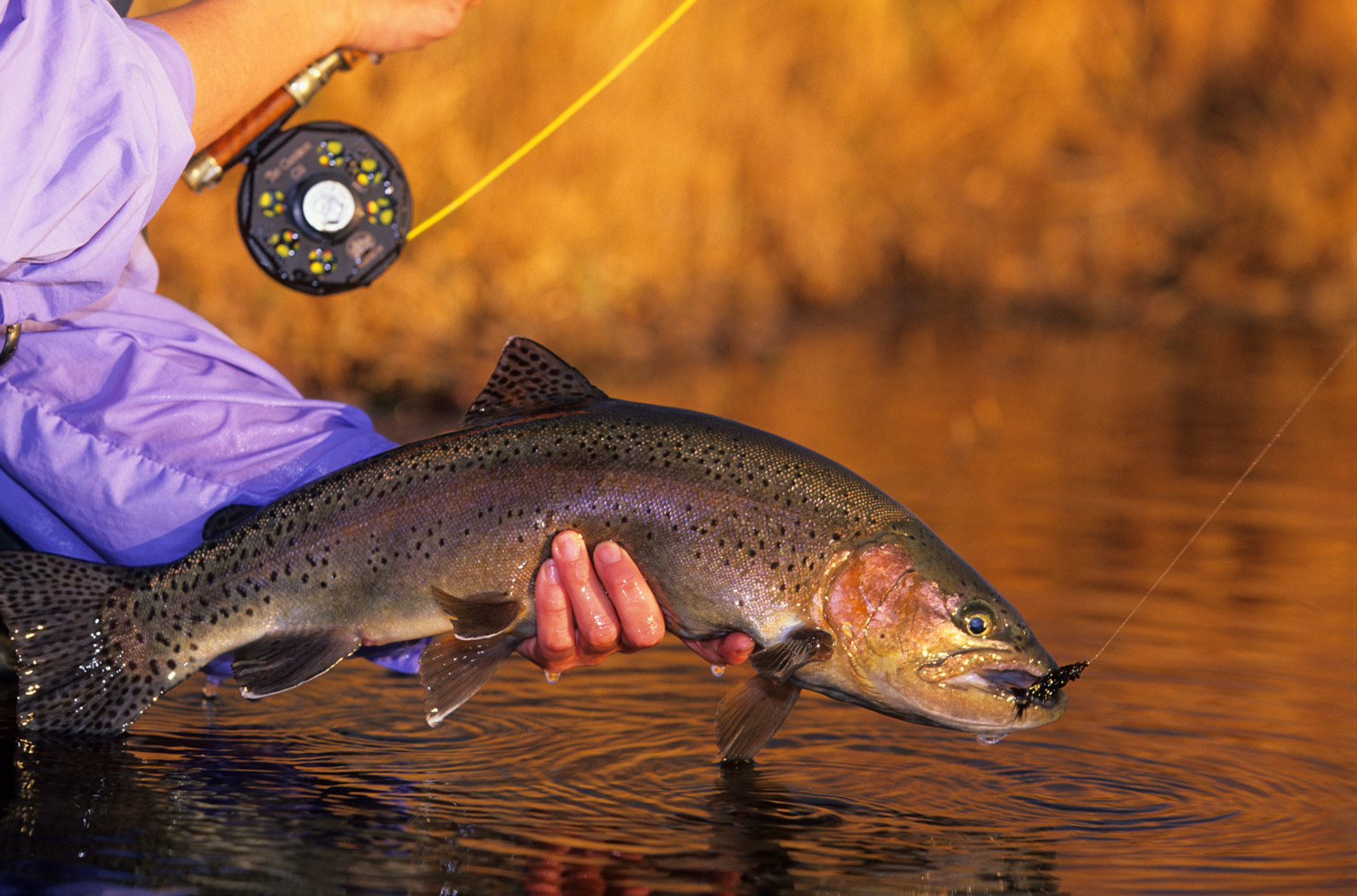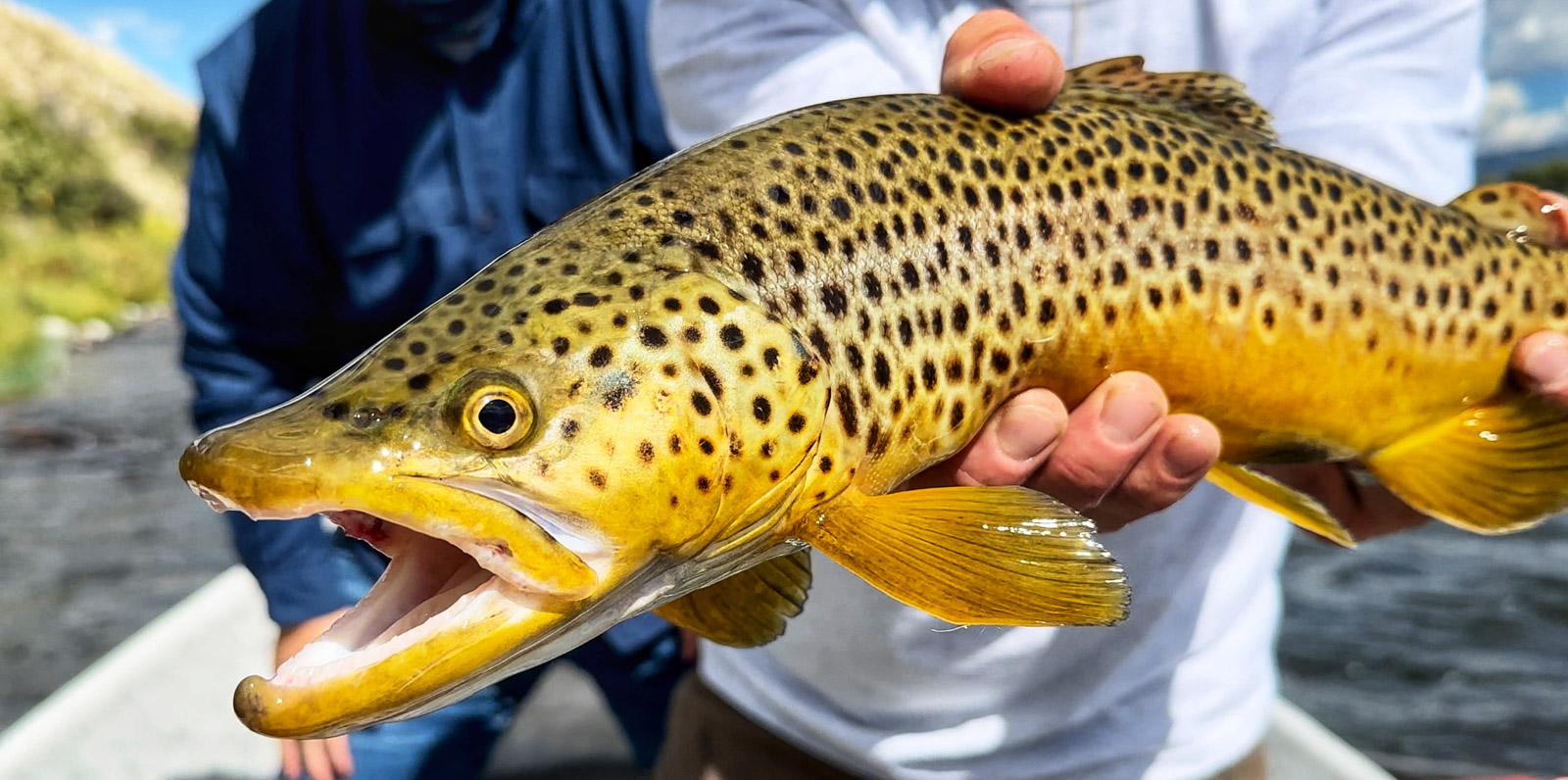Chasing the Beast

by Pat Straub
Big trout—the monsters of Montana’s rivers, creeks, and lakes—lurk in lairs of undercut banks, deep drop-offs, and driftwood snags. They hold in those places where a good cast is earned and where small trout dare not swim. Is it coincidence that Halloween, the time of mutants and monsters, occurs during big-fish season? Or Thanksgiving, with its titanic appetites and mammoth-sized meals? Indeed, fall is the season of the beast.
By most Montana standards, a big trout is one over 20 inches long. For fish to grow to this size, they need plenty of cold water and quality habitat—which the Treasure State has in abundance. This fall season, tag your Montana monster with some of these tips & tricks.
Think like a predator. Fall is when large trout shift from gatherers to hunters. With low streamflows, the available water for smaller fish to escape to is limited. But just as little fish feel like there is always something bigger than them in or above the water, bigger fish feel the same way—and you are that bigger fish. Approach the water slowly, and walk softly on the bank. Be sure your shadow does not cast onto the surface.

Time of day is important, but not a deal-breaker. When it comesto big trout in the fall, the early bird doesn’t always get the worm. The opposite is often the case. As the nights get longer and cooler, water temperatures drop as well. Weather patterns and available sunlight play larger roles than time of day for targeting big trout. Fish tend to be light-sensitive, so overcast days or diurnal hours are good for targeting large specimens. A sudden weather change may also slow a big fish’s desire to feed; it may also squelch a hatch or dampen the movement of smaller fish.
Target the right areas. Because big trout are predators, you should fish areas where these large trout can ambush your fly—drop-offs, cutbanks, bankside structure, even a shallow riffle. As the length of daylight grows shorter each day, shadows from bank structure linger longer. Fish in and along these shadows to entice a predatory strike.
Embrace and refine your streamer fishing. Most big-fish fanatics are adept streamer anglers as well. When fishing streamers, the retrieve—or lack thereof—is crucial. Experiment with slow strips, then fast strips, and a variety of twitches to imitate an injured baitfish. If fishing a drop-off or an undercut bank, cast above the drop-off or even on the bank. Cast upstream, then add a very small downstream mend in the fly line to create an elongated curve in the fly line. Allow the current to provide the downstream movement, as that presents the fly in a natural manner.

Choose a fly with eyes and contrasting colors. Eyes allow for a predator to focus on something, and contrasting colors create a variation on which a larger fish can target. Most trout have a variety of colors on their bodies, and trout eat trout. So, choose a fly that imitates the available food source.
Don’t ignore the small stuff. Big flies and streamers get most of the attention in the fall. When a thick hatch occurs and big flies stop working, you’ve got to match the hatch. That often means you need to cast better, get a better drift, and use a more lifelike pattern. You just need to fish better. Fishing better doesn’t happen immediately. When big fish flip the narrative and get selective, understanding the the nitty-gritty—fly selection, insect life cycles, micro-drag, deep- and sight-nymphing, floatants and dessicants, leader length, tippet size and rise forms—will result in more big fish to hand.
